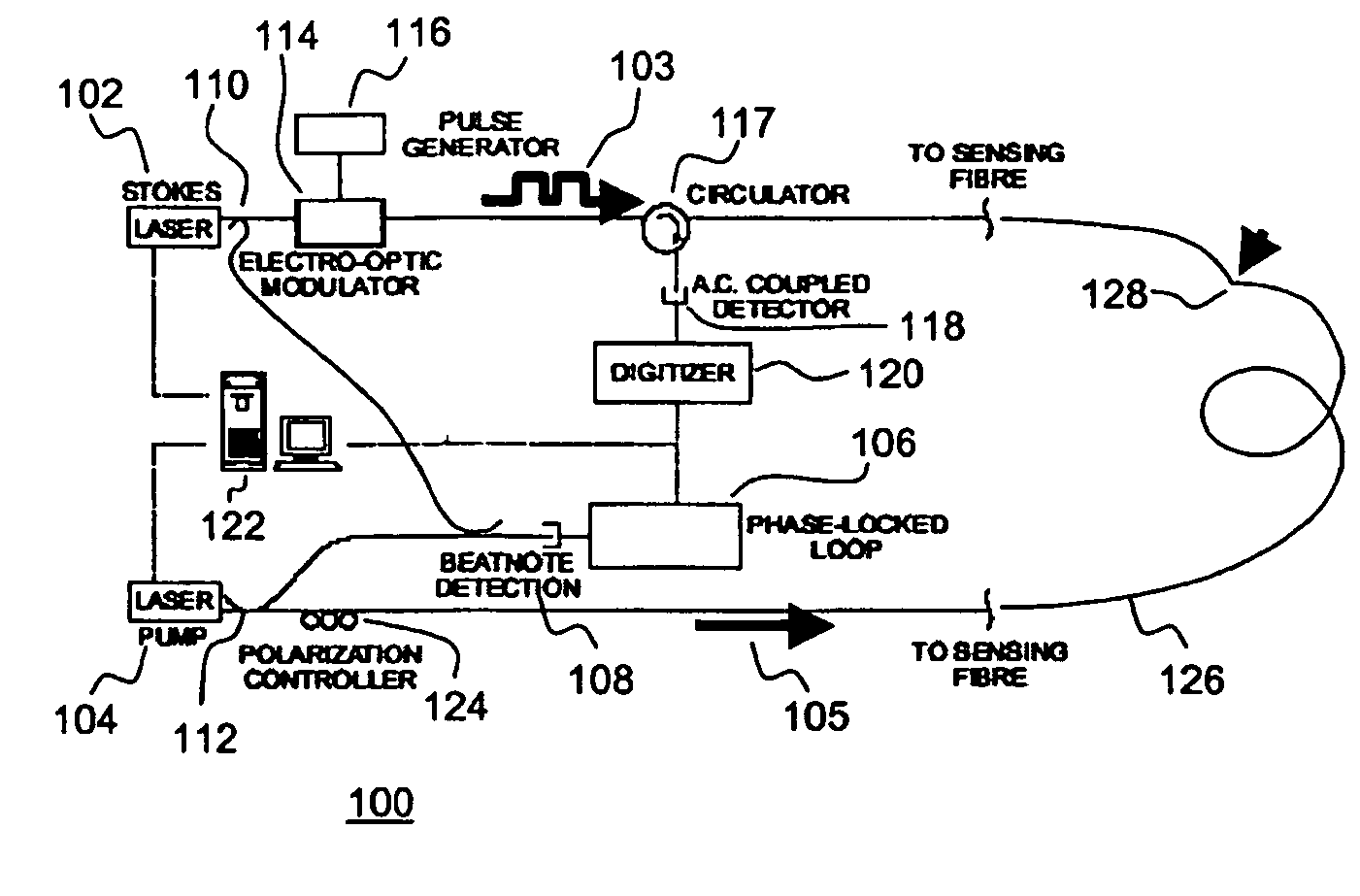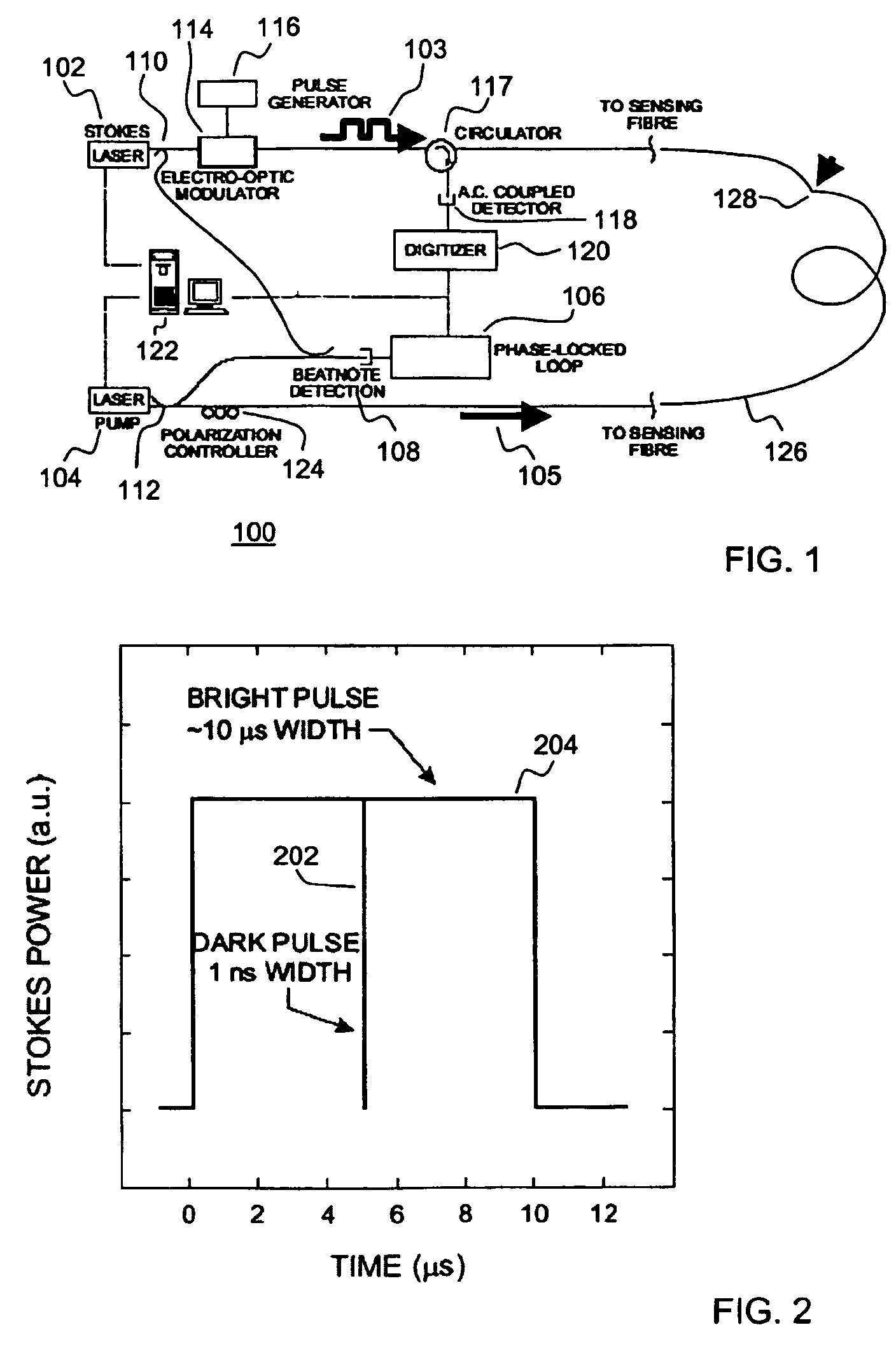System and method for resolution enhancement of a distributed sensor
a distributed sensor and enhancement technology, applied in the field of resolution enhancement of distributed sensors, can solve the problems of acquisition speed and/or overall sensing length, and achieve the effect of improving resolution without compromising acquisition speed or sensing length
- Summary
- Abstract
- Description
- Claims
- Application Information
AI Technical Summary
Benefits of technology
Problems solved by technology
Method used
Image
Examples
Embodiment Construction
[0032]A Brillouin Optical Time-Domain Analysis (BOTDA) distributed sensor system operates by measuring the interaction intensity of two counterpropagating laser signals within a test fiber, the continuous wave (cw) pump at a frequency v0, and the Stokes pulse at a lower frequency v0-Δv (the Brillouin loss mode of operation is assumed). Power will be transferred from the cw pump to the Stokes pulse through an acoustic wave at any location within the test fiber where Δv lies within the local Brillouin gain profile. The position of such a location may be determined relative to the end of the fiber from which the pulse is launched through conventional optical time domain reflectometry (OTDR) techniques. That is, the spectral information detected a time t after the launch of the Stokes pulse comes from a location ct / 2n from the end of the fiber where c is the speed of light and n is the refractive index of the fiber. Therefore, t is the time required for the pulse to reach said location ...
PUM
| Property | Measurement | Unit |
|---|---|---|
| wavelength | aaaaa | aaaaa |
| peak power | aaaaa | aaaaa |
| frequency | aaaaa | aaaaa |
Abstract
Description
Claims
Application Information
 Login to View More
Login to View More - R&D
- Intellectual Property
- Life Sciences
- Materials
- Tech Scout
- Unparalleled Data Quality
- Higher Quality Content
- 60% Fewer Hallucinations
Browse by: Latest US Patents, China's latest patents, Technical Efficacy Thesaurus, Application Domain, Technology Topic, Popular Technical Reports.
© 2025 PatSnap. All rights reserved.Legal|Privacy policy|Modern Slavery Act Transparency Statement|Sitemap|About US| Contact US: help@patsnap.com



